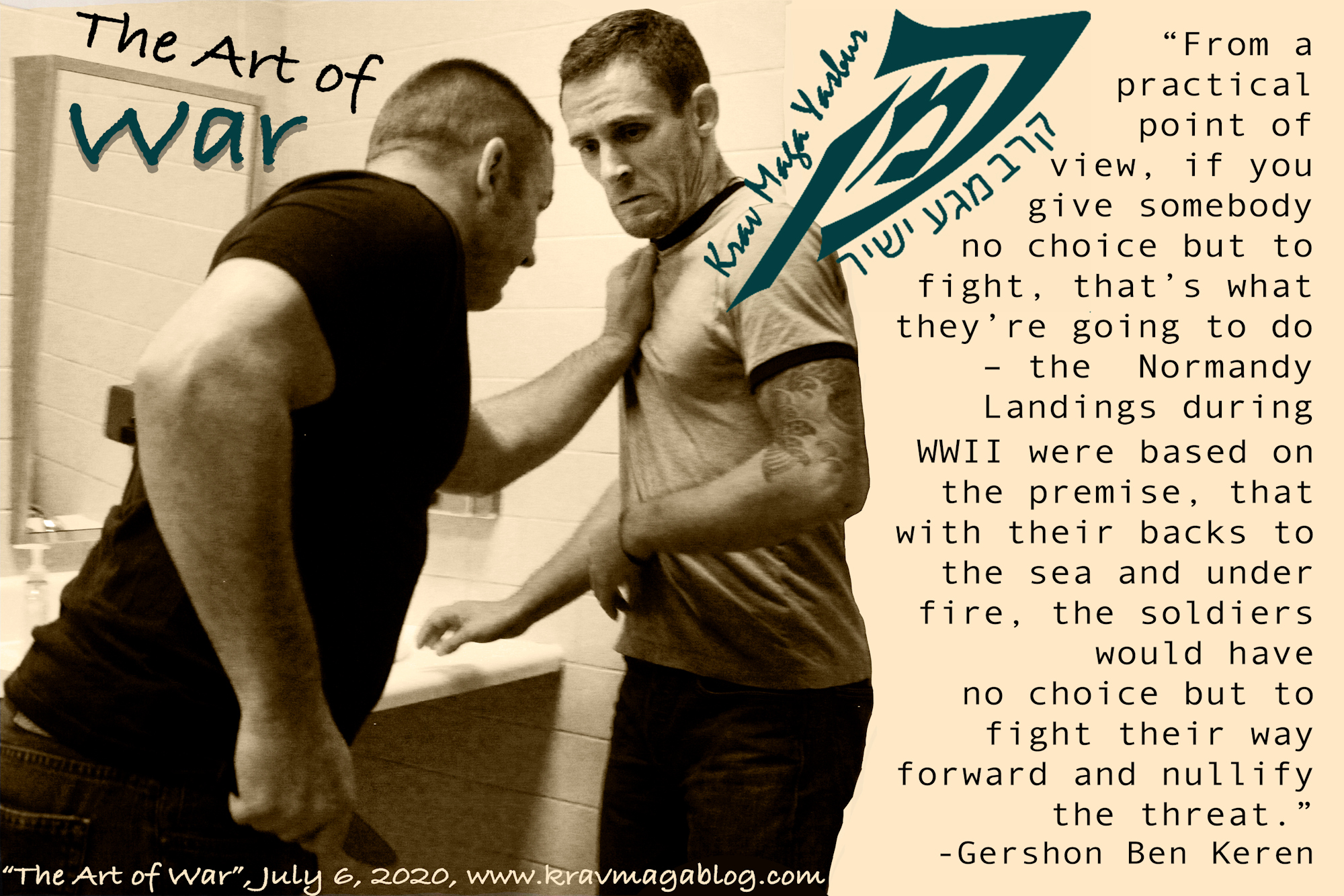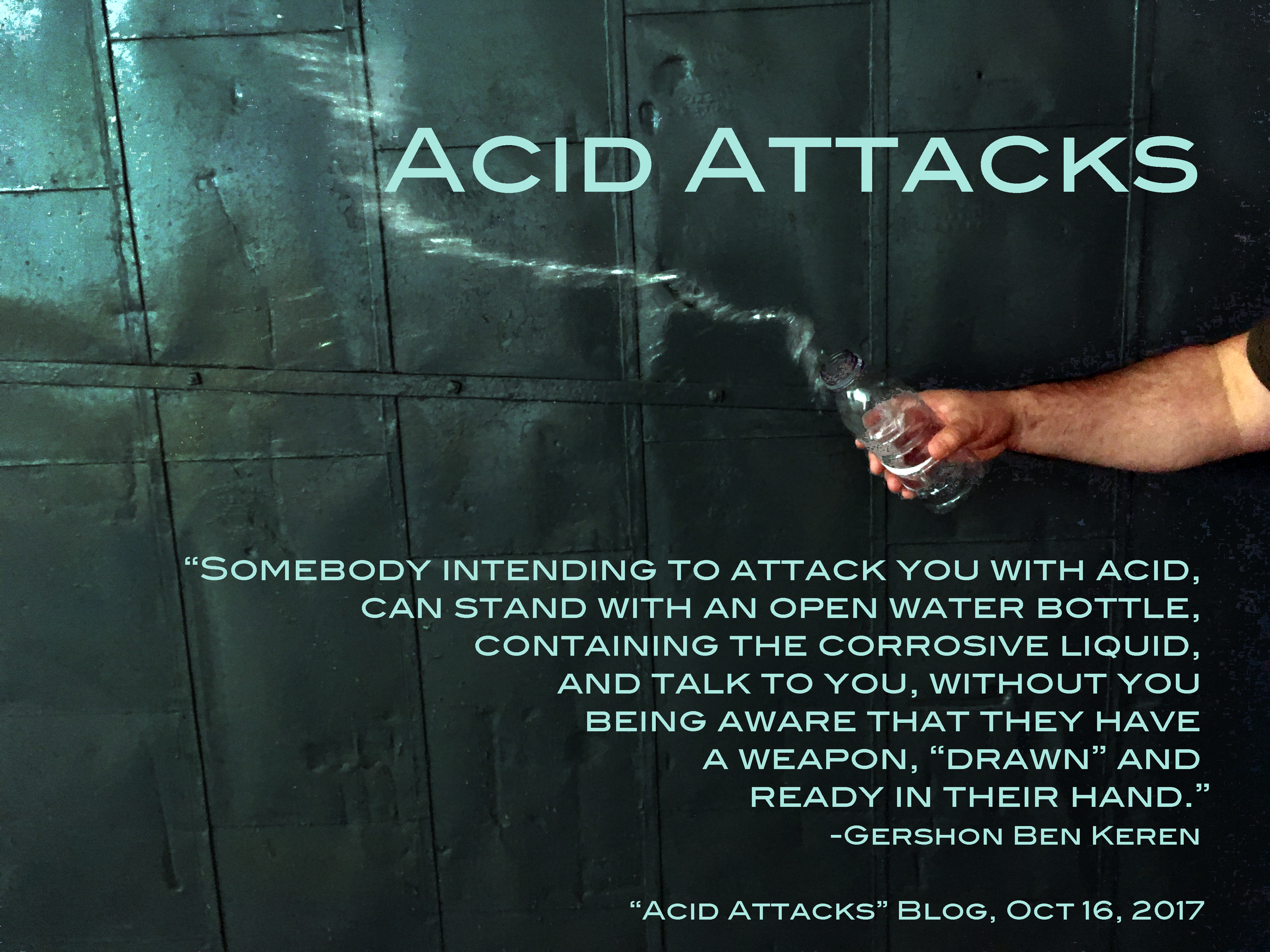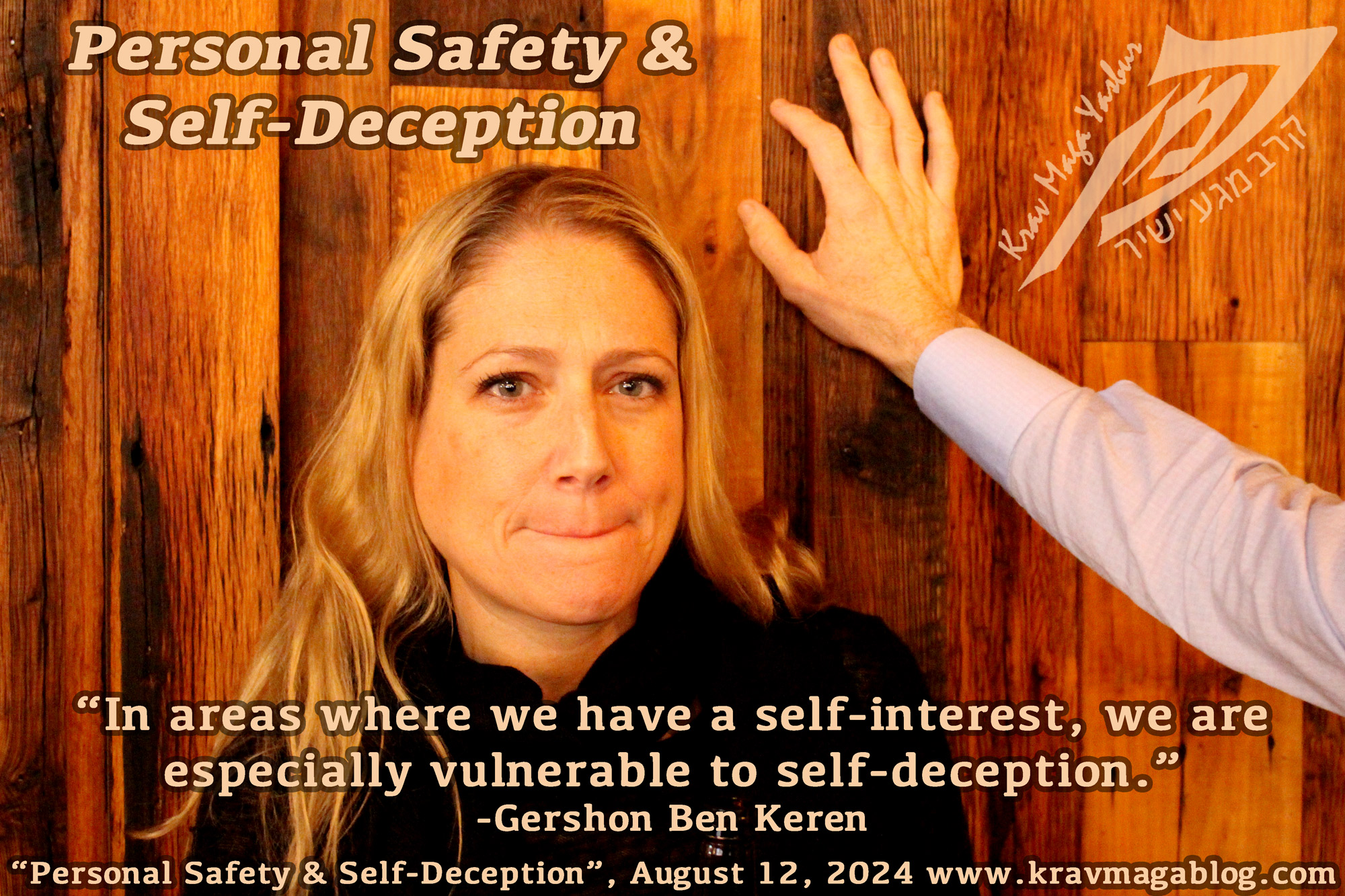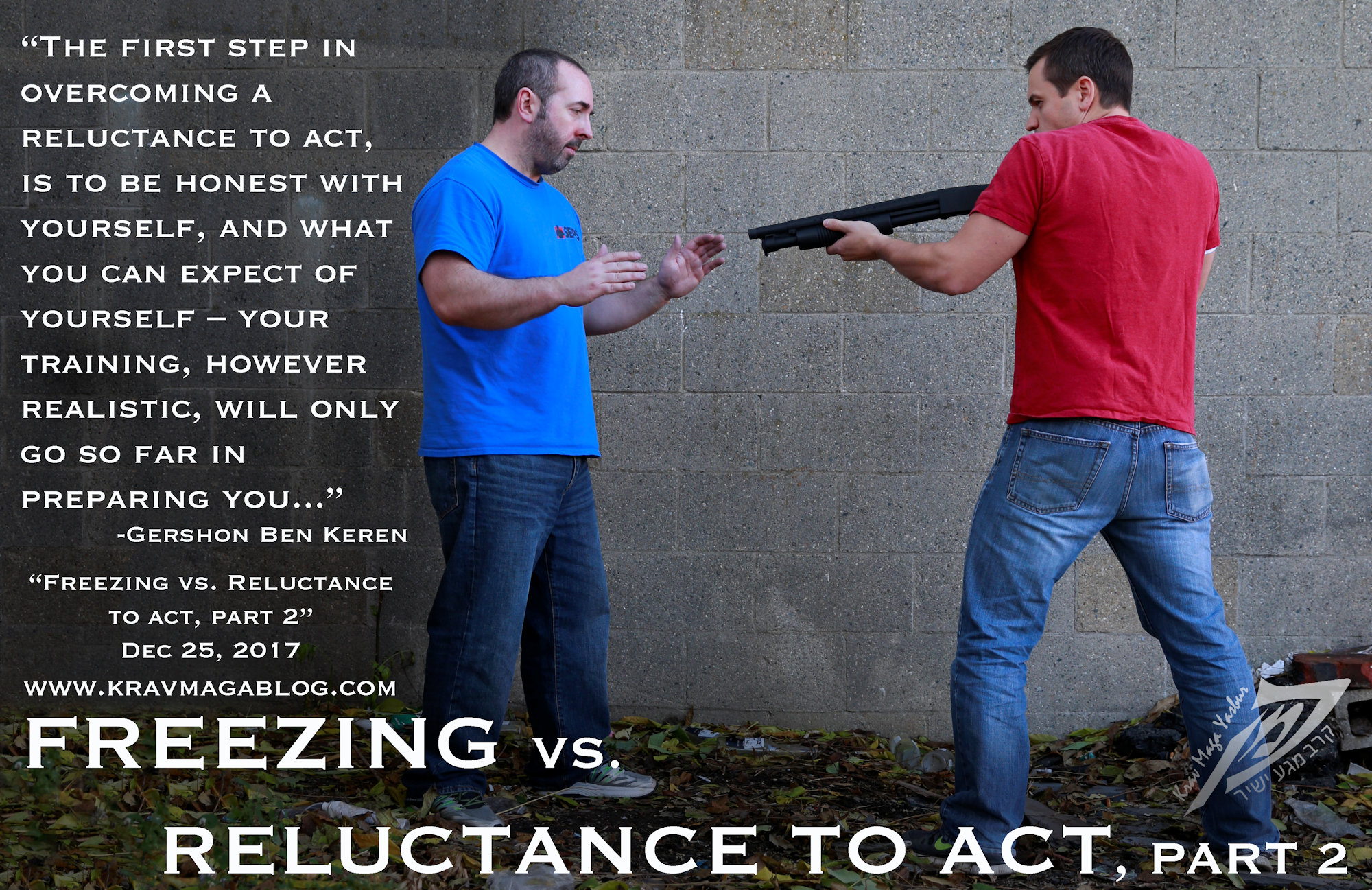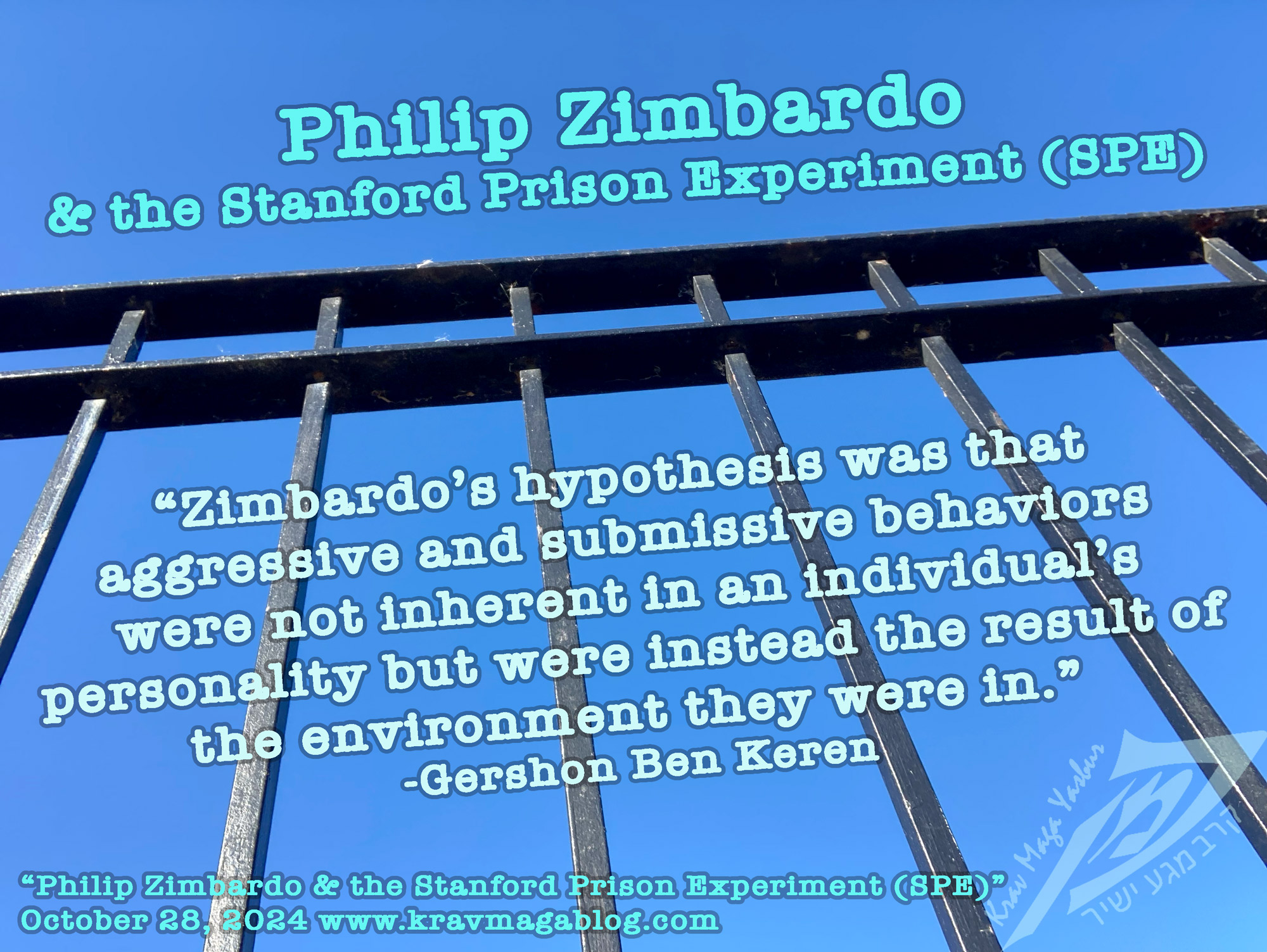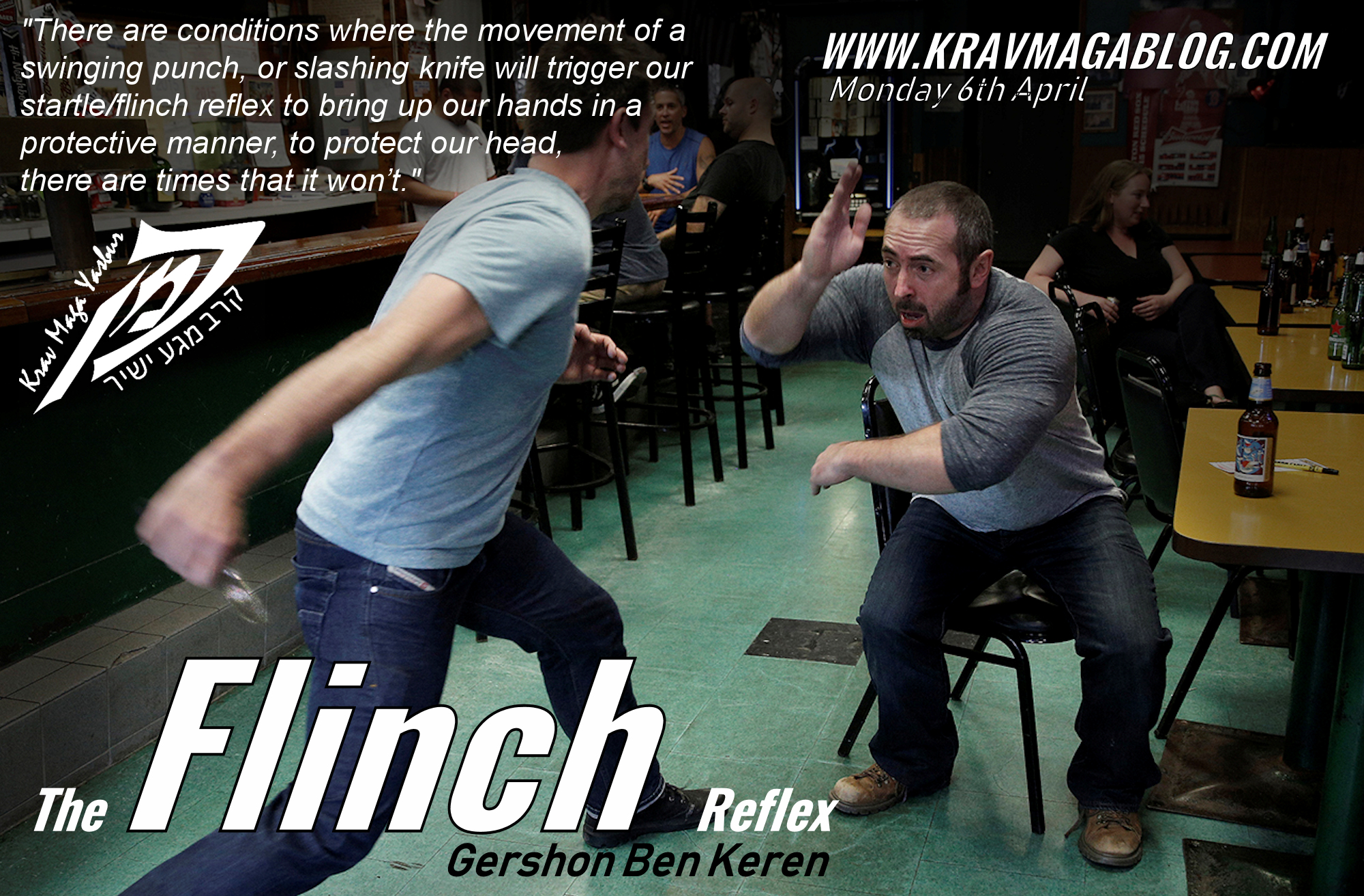The Flinch or Startle Reflex , is an article written by Gershon Ben Keren, a 5th Degree Black Belt in Krav Maga, who teaches Krav Maga in Boston, MA. He has also authored three Amazon best-Selling Books on Krav Maga.
Krav Maga and certain other systems, aim to work with the body’s natural responses to attacks, rather than prescribing a set of “artificial” and trained movements as a response. In my opinion, recognizing how the body will respond under stress, accepting the limitations of what is possible in the moment you are attacked makes a lot of sense, and is a great starting point and foundation for any self-defense approach/method. Unfortunately, this way of working sometimes breeds an air of over-confidence in what we are actually capable of i.e. there is a belief that our “automatic” response to certain movement will always be “automatic”, and unfortunately this isn’t the case. There are conditions where the movement of a swinging punch, or slashing knife will trigger our startle/flinch reflex to bring up our hands in a protective manner, to protect our head, there are times that it won’t. Unfortunately, our natural responses are subject to certain conditions and contexts, and if these don’t exist, neither will our automatic responses. In this article, I want to look at how our startle reflex is activated, along with why there are times that it isn’t. By understanding these things, we can hopefully put measures in place, both in our training, and in our real-world application of that training, which will increase our survival chances.
Vision is not a unified sense but is something that is divided and mapped onto various brain surfaces, via a set of segregated visual functions. When I was studying for my first Masters in Psychology, almost thirty years ago, there was a fairly established belief, that there were two routes/pathways along which visual information and stimulus was processed: one which sent more complex information to our prefrontal cortex for conscious processing e.g. such as calculating how we should move in space, in order to be able to catch a ball, and another which triggered our more primitive and reptilian system(s), such as pulling away, and raising our hands when a movement – such as a punch – was identified as it came towards us. Whether, such a clear-cut distinction remains, is up for grabs, and the jury is still out. However, if there does exist a second route to visual processing, that triggers innate “animal”-like responses/reactions, it is extremely basic, and in all likelihood limited to specific contexts, such as flinching at certain movements when in certain conditions. This means we need to be careful in believing that we will always react in an identical and universal fashion in all situations. In some, we may need to set and manage the conditions to give it the best chance of doing so.
The flinch/startle reflex doesn’t always get triggered, and this is worth noting for those who think and believe that it’s something that you can rely on, as a defense, when you are completely unprepared, ambushed, taken completely by surprise, etc. If you are engaged in a conversation with someone, and you are completely at ease because they’ve lulled you into a false sense of security, etc., processing the information they are conveying to you, and then suddenly they punch you in the face, it will take time for your cognitive processing to switch over to your “instinctive” response; meaning that your flinch/startle reflex may not be stimulated. This is also true, if you go into a state of denial or discounting where you try to convince yourself that the situation your facing contains no threat or danger. Even in a heightened emotional state, if you are consciously engaged in a process of “self-talk”, where you are telling yourself, that you’re over-reacting, imagining the threat, etc., whilst you are doing this, you may be suppressing some of your instinctive and instinctual responses if attacked. For our reflexes to work for us, we must give them the appropriate bandwidth for them to act as intended. There is also a myriad of startle/flinch reflexes e.g. if somebody suddenly throws a punch, you may bring your hands up protectively, and/or turn away from the movement, however if you walk around the corner of a building into somebody holding a gun or a knife, you’re more likely to pull back, and freeze, etc. We also don’t all react to the same movement, in the same way, all the time; if we have a certain level of awareness that we are in danger, we may find ourselves moving towards a punch in order to suppress the movement. We should also be aware that people we are punching and striking may do the same – if we always train that people move back when we strike/punch, we may find ourselves surprised and our tactics ineffective when the opposite occurs.
The startle/flinch reflex may also be subject to Prepulse Inhibition (PPI). This is where a weaker stimulus, that precedes a stronger one, inhibits the reflex. If someone, standing in front of you, was to suddenly throw a punch towards your face – a large movement – there’s a good chance, everything else being equal that your startle reflex will be stimulated, however if they were to precede this by pointing in your face – a smaller, “weaker” movement – Prepulse Inhibition may occur, and your flinch reflex wouldn’t be activated. This inhibition is affected by the strength of the pre-stimulus, and the length of time between the two movements i.e. the separation is somewhere between 100 and 1000 ms. This has implications for both attacking and defensive actions i.e. we can use it to our advantage, whilst making sure that we don’t fall victim to it. Most social and spontaneous violence starts face-to-face and involves some form of dialogue; this is also true of many premeditated situations where a predatory individual may first engage us in conversation to both gain access to us and put us off our guard. In many of these social situations, putting the hands out in front in a “traditional” de-escalation stance or fence, and instructing somebody to “Get Back!” isn’t an appropriate response and may in fact escalate things. In such situations it may be better to “talk” with your hands, which gives you an excuse to put your arms out in front of you, protecting and managing the space between you and your potential aggressor, in a much more low key way. With the hands moving in this way, if you need to make a pre-emptive strike, you may benefit from your assailant’s Prepulse Inhibition. The hands should move in a circular fashion, as our eyes linger longer on such movements as we follow the direction of the curve, even after the hand has stopped moving; this is why magicians moves their hands and arms in circular motions. If we find that somebody is doing the same to us, or is pointing, gesticulating and generally waving their hands in our face, etc., it might be wise to take this as a pre-violence cue, and either disengage completely or make a pre-emptive attack (as a covering distraction), before disengaging.
It is not my intention to devalue the importance of using the flinch/startle reflex for defending against punches and strikes – I teach this approach, so I believe it has benefits – rather it is to make clear the limitations that “automatic” responses and reactions have, and that it is up to us to manage our awareness levels so that we give them the best chance of working i.e. we can’t always simply expect them to work for us, without any input of our own; it is up to us to set the conditions to ensure that they will work for us when they are needed.
0 COMMENTS